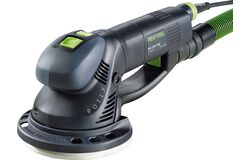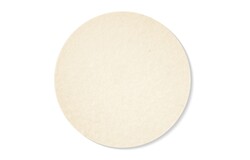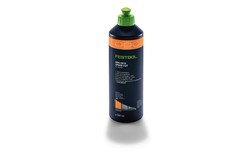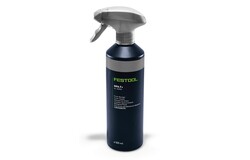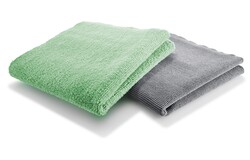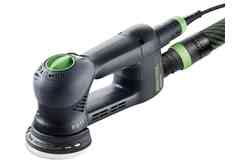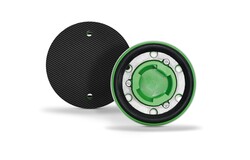Pulir plexiglás y alisar bordes de corte
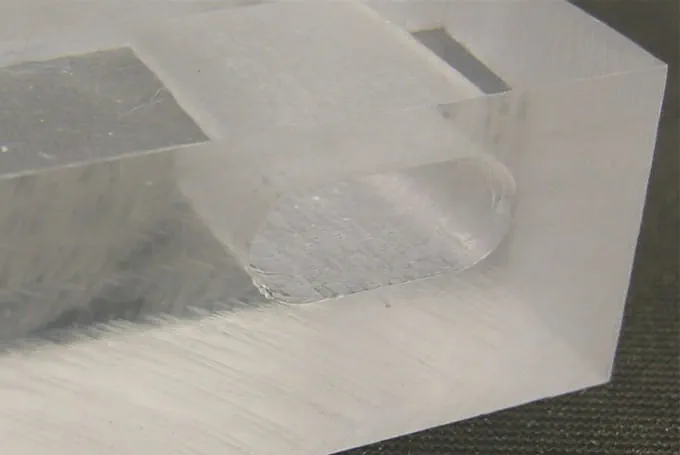
Descripción
Al serrar vidrio acrílico, se crea un borde de corte basto y con un aspecto blanco lechoso. Si los bordes de corte deben ser visibles, es necesario que la superficie presente un aspecto limpio y brillante. En este ejemplo de aplicación se muestra cómo pulir bordes de corte en vidrio acrílico con la ROTEX para obtener superficies limpias y brillantes.
Máquinas/accesorios
Herramientas alternativas
Preparación/ajuste
-
En primer lugar, montar el plato pulidor en la ROTEX.

-
Colocar el fieltro pulidor en el plato pulidor.
Para mejorar la seguridad del proceso de pulido de plexiglás, conviene retirar el adaptador de aspiración que no se vaya a necesitar.

-
Cambiar el ajuste de la ROTEX a lijado basto.

Procedimiento
-
Procedimiento convencional: Lijado a mano: requiere tiempo, esfuerzo y gasto de energía
Problema:- En la preparación mecánica con amoladoras angulares existe el riesgo de sobrecalentamiento de la superficie y de pérdida de la pasta de pulido.
- A medida que aumenta la temperatura, el plexiglás va absorbiendo más agua. Cuando la temperatura supera los 40 °C, se puede producir una decoloración blanca lechosa en el acrílico.
- Esta situación puede subsanarse mediante el secado al aire o en horno, siempre que ello no suponga un esfuerzo excesivo.

-
Con la ROTEX y sus accesorios, el problema referido anteriormente se resuelve de la siguiente manera, y se obtiene un borde de corte limpio y brillante:
- En primer lugar, aplicar el agente de pulir sobre el fieltro pulidor.

-
- Ajustar la velocidad 1 para que la pasta de pulido se reparta sobre la pieza de trabajo. Para evitar que la pasta de pulido salga despedida al encender la ROTEX, la máquina se debe poner en marcha solo cuando esté en contacto con la superficie que se va a pulir.
- Aumentar progresivamente la velocidad hasta el nivel 4-6.
- Pulir el acrílico ejerciendo una ligera presión sobre la ROTEX.
- A continuación, limpiar la superficie con el paño de microfibras para comprobar cómo ha quedado, y, si es necesario, repetir el procedimiento anterior para pulir los bordes de plexiglás con cuidado.
Observaciones:
Se debe evitar realizar el acabado con piel de cordero, ya que al frotar el plexiglás con este material se generan cargas estáticas que atraen el polvo. Mientras la superficie no se lave o se limpie, el efecto estático se mantiene. Si se producen cargas estáticas en la superficie, incluso sin utilizar la piel de cordero, el plexiglás se puede limpiar, una vez pulido, con un producto antiestático para limpieza y conservación de plásticos.

-
Nuestros ejemplos de aplicación y resultados de trabajo son la documentación de los pasos de trabajo realizados por nosotros. Se trata de ejemplos individuales y no son garantía de que el usuario obtenga los mismos resultados. Los resultados dependen de la experiencia y la destreza del usuario, así como del material utilizado. Los ejemplos de aplicación no sustituyen al manual de instrucciones de Festool y/o a las indicaciones de seguridad. Queda excluida toda responsabilidad sobre la ausencia de errores de contenido o de tipo legal en las informaciones, las instrucciones, las aplicaciones, sobre todo en lo relativo a la carencia de errores, corrección, carencia de derechos de protección y de propiedad intelectual de terceros, integridad y/o aplicabilidad. Queda excluido cualquier derecho de reclamación por daños y perjuicios del usuario, sin importar el motivo legal. Las citadas exclusiones de responsabilidad no son válidas en caso de dolo, negligencia grave o en casos en los que la ley establece una responsabilidad obligatoria.
No nos hacemos responsables de los daños indirectos que pudieran originarse.↑




































